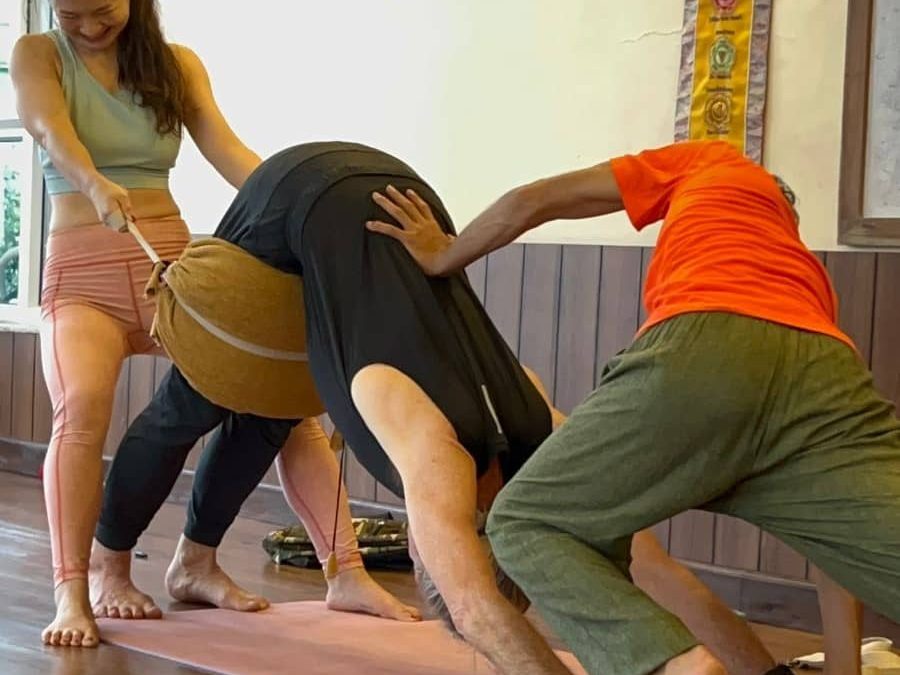Role Of Lead Trainer In Yoga Teaching
Ask how long you can anticipate meditating if you want to learn more about the practice. Alternatively, please inquire about the underlying philosophy of their meditation practice. When it comes to meditation, how long do you often spend there? I’d be skeptical of software that can’t identify its own biases yet promises to be able to accomplish anything. Ideally, this will not be their first experience as Lead Trainer in yoga teaching during Yoga teacher training program.
At least five years of teaching experience is required for a Lead Trainer in yoga Teaching trainer to give a Lead Trainer in yoga Teaching course (YTT). The process of honing a training’s content might take years. In addition, the program will likely include 3-4 extra instructors—a teacher who utilizes anatomy as a detailed case study. A philosopher, for example, might be an excellent choice. More than one yoga instructor serves as the program’s primary facilitator, while others provide extra color and flavor.
Preparing Students for Practice by Teaching them to Be Present
A Lead Trainer in yoga Teaching’s first job is to bring the class back to the present moment and get everyone in the right frame of mind. As a matter of course, the studio should be welcoming and comfortable. If the instructor has time, they may also light a candle and set it on an altar as the lesson starts. Even if you do this one thing, the vibe in the room will alter, and a feeling of reverence will pervade.
Additionally, a Lead Trainer in yoga Teaching must ensure that the training session they plan for each class is suitable for the students to present. On any given day, the instructor must be able to clearly explain, adapt, and show the asanas to all of the students in the class.
Unity in Yoga Classes
It’s time for us to look within first. We know it’s important, yet it’s easy to overlook our prejudices and preconceptions regarding our Lead Trainer In yoga Teaching practice. Think about how you feel when you meet a person of a different race, encounter a homeless person, or encounter someone who speaks another language.
You may have been blind to your prejudices all along. We developed to defend our groups, people like us, so it’s not anything to put yourself down for. That’s still a part of us on a primitive level, however. Importantly, our more developed selves see that such defensiveness is seldom required, and as a result, we can be open and loving with everyone we come into contact with.
Create a Warm and Friendly Space
You may be surprised to see a bigger student join your class, especially when surrounded by your usual slender and muscular students (yes, in working with the body as we do, this issue crosses into body-image considerations). There is a part of us that You may oppose guiding the bigger student, and hence we may not be as attentive as we are to other students. We might also provide this pupil more one-on-one attention than the other students in our classroom.
Preconceptions about various individuals may be damaging to our teaching if we restrict students’ freedom in their practice, for example, by forcing them to execute a specific modification rather than giving them the freedom to pick what’s best for themselves. At the time, a little part of us could presume this just because a pupil is age or physical condition.
Efficacious Teaching Strategies
A Lead Trainer in yoga Teaching’s job is to find out how their pupils learn best so that they can tailor their lessons to their individual needs. In one of your classes, for example, you observe that most of the pupils’ facial expressions seem to be blank or somewhat bewildered when they hear your carefully-crafted verbal cues.
Students in the first class would benefit most from demonstration training, while those in the second class would benefit most from instruction emphasizing physical cueing and prop use. This strategy works well in classrooms with fewer students, especially if those students attend your class regularly.
Diverse Approaches to Education
At other times, we find ourselves teaching sessions where most students don’t appear to learn best via any of those three methods – or it’s impossible to tell whether there are any at all. With great courses, both possibilities are possible. It’s also possible that the majority of the pupils in your classes are the same each time you teach them. For example, you may be conducting a one-time workshop or other educational activity.
We may provide our kids with various sensory inputs by using a combination of aural, visual, and kinesthetic cues. That allows everyone to get the training they need, regardless of what form of information works best for them. In other words, you may use a combination of verbal cues and images, demonstrations and peer demonstrations, and physical assistance and direction on how to use props.

